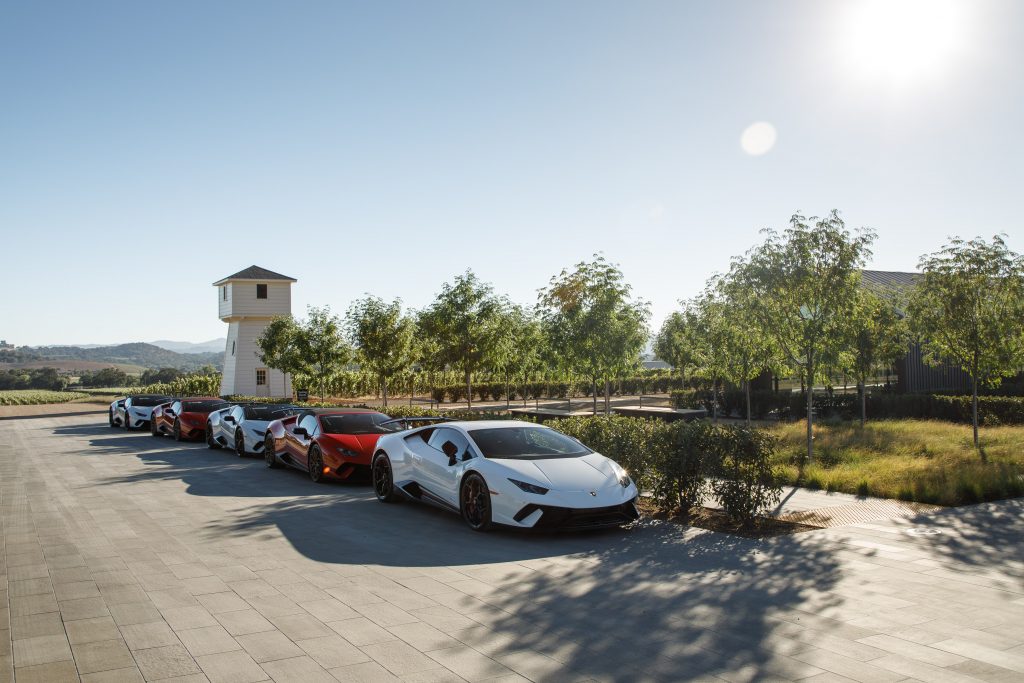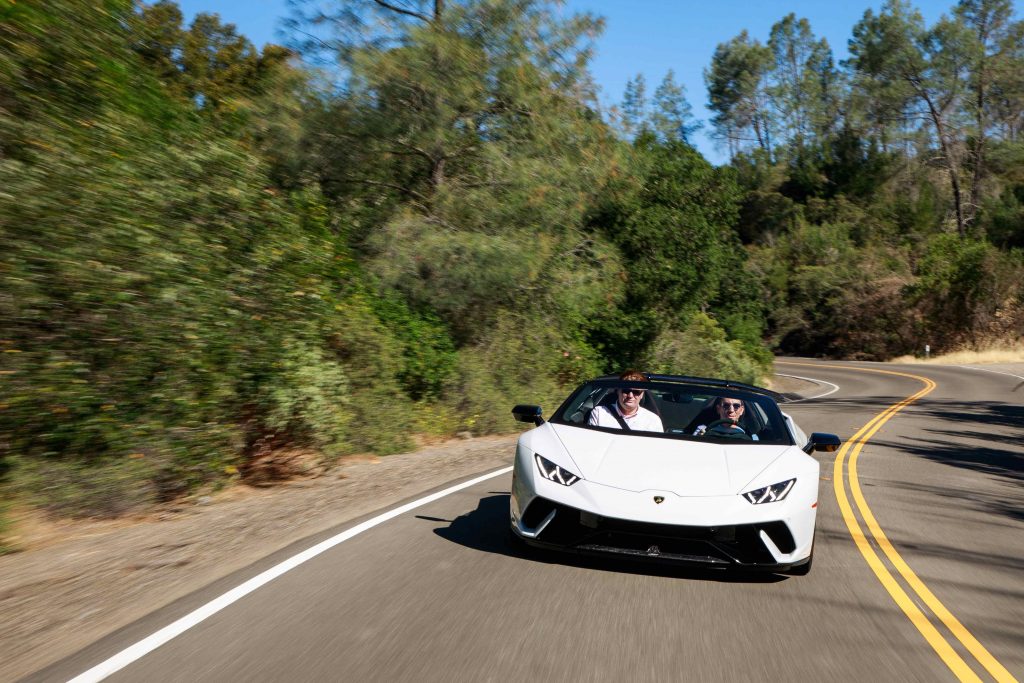Test Drive: Lamborghini’s Huracan Performante Spyder
A study in power, composition, and elegance—to orchestral effect

If you’re in the market for a new best friend, it could be worth checking out the $308,859 Lamborghini Huracan Performante Spyder. Like a loyal companion, it builds you up, encourages you to take chances, and convinces you that you’re a better driver than you really are. You feel fantastic when you’re together.

But to Alessandro Farmeschi, CEO of Automobili Lamborghini, Americans Region, the Huracan Performante Spyder isn’t just a buddy, it’s also a work of art. The 5.2-liter, V10-powered Spyder is a study in power, composition, and elegance, to orchestral effect. “All the elements have to play the right instruments at the right time,” Farmeschi explains at last month’s launch event in Napa Valley‘s Silver Oak Alexander Valley.

Even on the California wine country’s sharpest turns and blindest corners, the formidable forged-composite convertible evokes cries of “Bravo! Brava!” over the magical exhaust. Dial up the throttle on the most questionable of curves, and the Performante Spyder remains steadfast, never wavering or veering from the road. The 640-horsepower Lambo knows how to assert itself while remaining loyal to the steering input, never over- or under-compensating. It’s grounded, down to earth, and responds with exactly what you need—just like a best friend.

Lamborghini unveiled the Performante treatment last year as a faster, more powerful and more expensive variant of the Huracan. The Performante Spyder is a car, Farmeschi says, “that can perform at any time.” Of course, the longer the name, the more you’ll pay. Starting at $274,000, the Huracan Performante coupe costs about $32,000 more than the regular Lamborghini Huracan coupe. Removing the roof, and the Huracan Performante Spyder clocks in nearly $47,000 above the regular Huracan Spyder’s $262,000 starting price.

But with more dollars comes more thrill. The Huracan Performante Spyder, Farmeschi says, emits “an incredible sound that is an emotion, basically” on its way to a maximum speed of 202mph. It’s so quick off the line that Lamborghini gives its acceleration time in an interval of zero to 124mph—twice as long as the standard zero-to-60 measure cited by other automakers—and it still clocks in at a stomach-lurching 9.3 seconds. Another charmed number on a hot summer day in Calistoga: 17, the number of seconds it takes for the roof to open at a leisurely speed.

Like the other members of the Huracan family, the car comes in three drives modes—Strada, Sport, and Corsa—and derives from Lamborghini’s forged carbon fiber composite, a material comprised of chopped carbon fibers used to make lightweight body panels. It also benefits from Lamborghini’s proprietary aerodynamic technology. ALA—the Italian word for “wing” and an abbreviation for Aerodinamica Lamborghini Attiva—routes airflow through the car’s underbody and the car’s rear wing to enhance performance. Electric flaps on the spoiler and rear wing force air through the wing to reduce drag and increase traction, whether on a straightaway or twisty road. Twenty-inch forged alloy wheels and a snug, Alcantara-clad cabin for two complete the look.

Lamborghini plans to make less than 300 Huracan Perfomante Spyders for the global market, an exercise in managing demand. “We want to keep this kind of product very exclusive,” Farmeschi said. “It’s a very small amount.”
Images courtesy of Lamborghini













What are your thoughts?